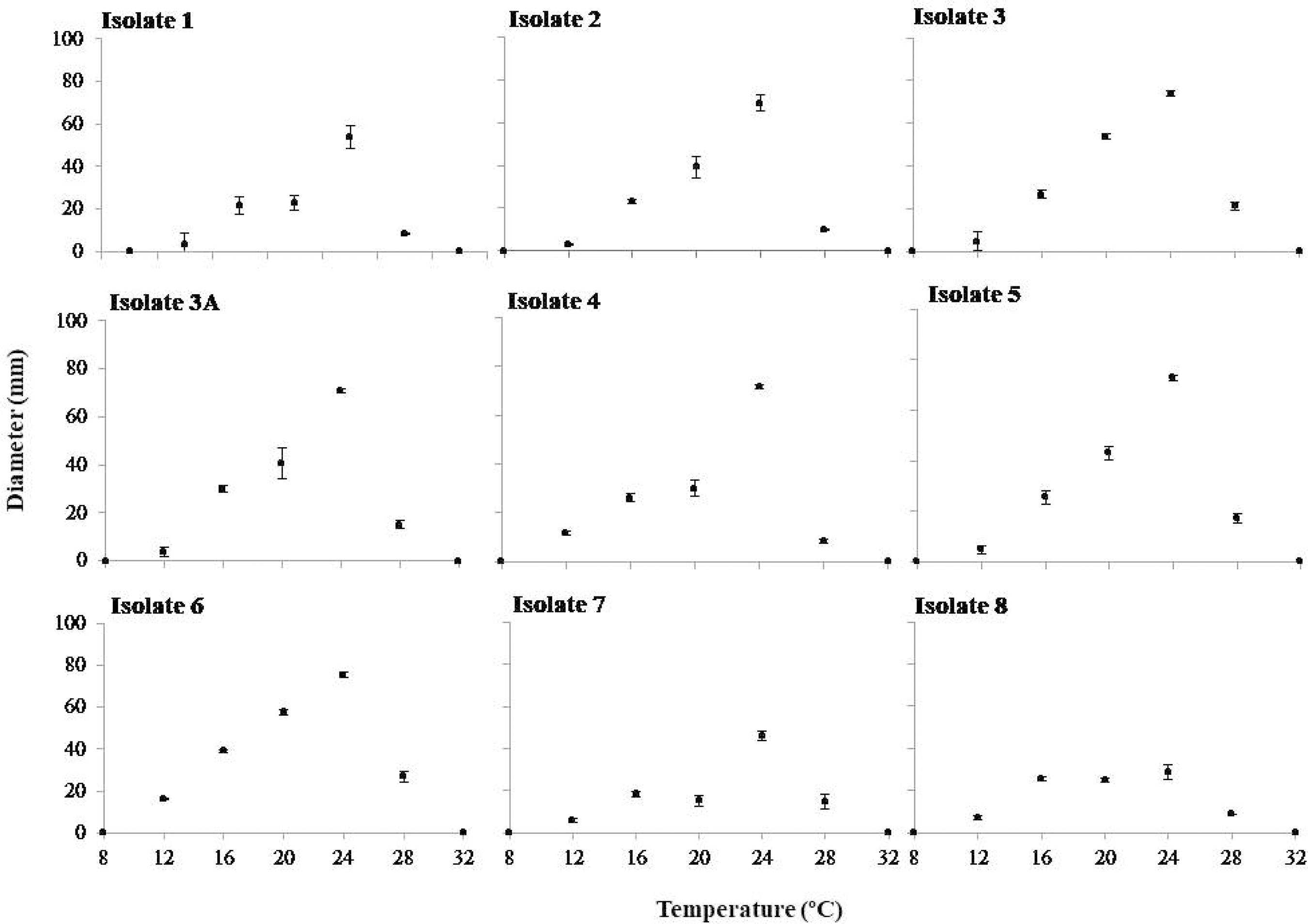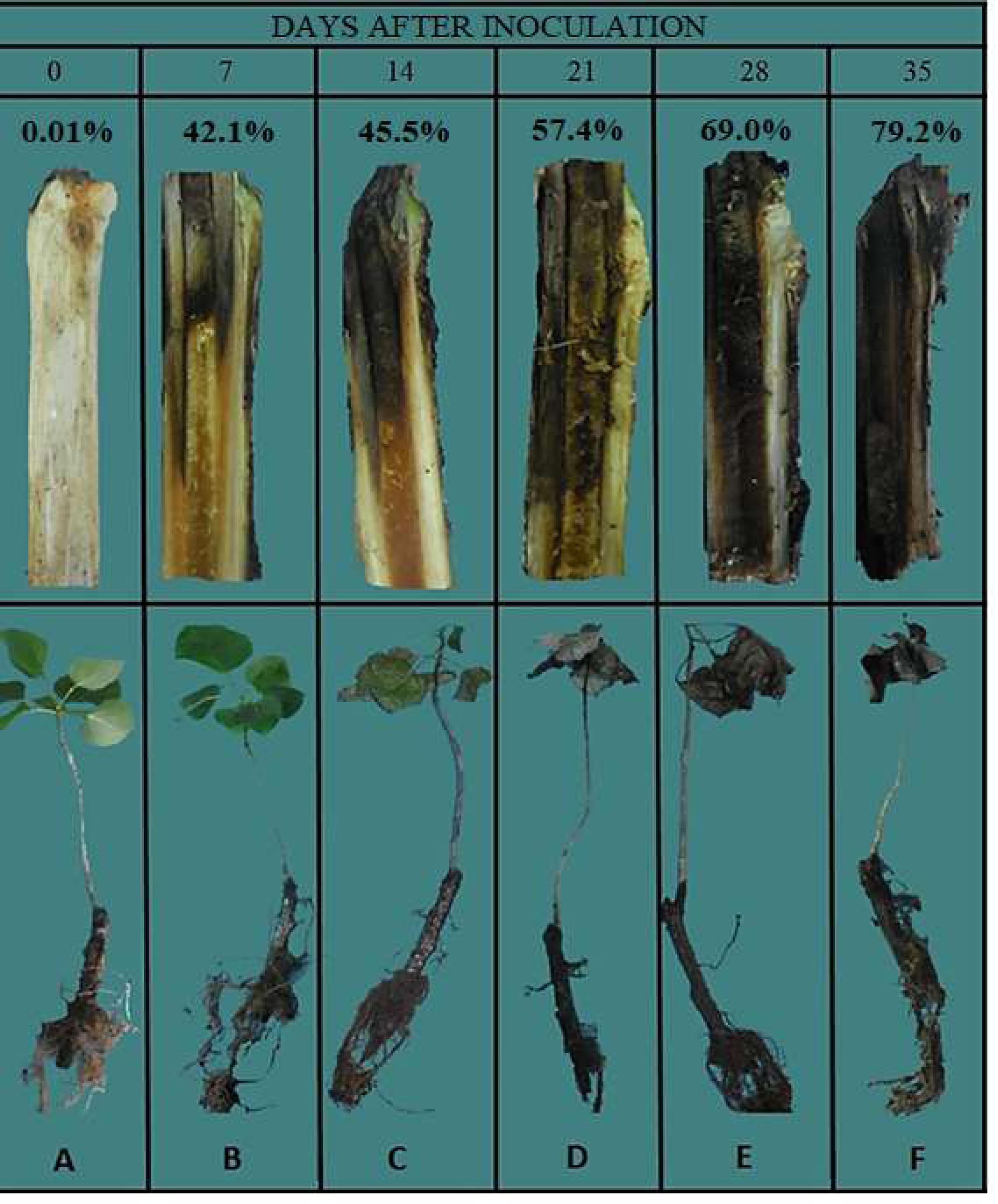ABSTRACT
Poplar (Populus deltoides) is a forest species that has several phytosanitary problems, such as leaf spots, rusts and root rots. Since 2010, the death of poplar trees has been observed in commercial plantations in the state of Paraná, Brazil, caused by the fungus Rosellinia bunodes. Due to the lack of information about this pathosystem, the aim of this work was to carry out the physiological characterization of R. bunodes isolates collected from P. deltoides and the symptomatological characterization of Rosellinia root rot in the same host. Experiments were conducted at Embrapa Florestas, located in Colombo (PR), Brazil. The mycelial growth of nine R. bunodes isolates was evaluated in four culture media (potato-dextrose-agar, V8-agar, carrot-agar and water-agar) and seven different incubation temperatures (8, 12, 16, 20 24, 28 and 32 °C). The symptomatological characterization of Rosellinia root rot was performed on six-month-old poplar seedlings. The most favorable conditions for mycelial growth of R. bunodes were observed in potato dextrose agar (PDA) at 24 °C. The symptoms and signs of the disease internally in the stem showed up at 7 days after inoculation (DAI); however, chlorosis and wilting were observed only at 14 DAI. Sexual and asexual reproductive structures of R. bunodes were not observed on inoculated plants.
Keywords:
Root rot; Fungus; Mycelial growth




